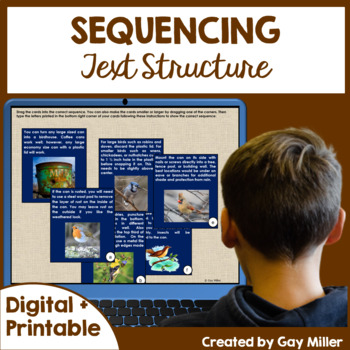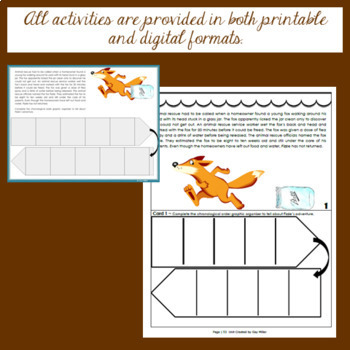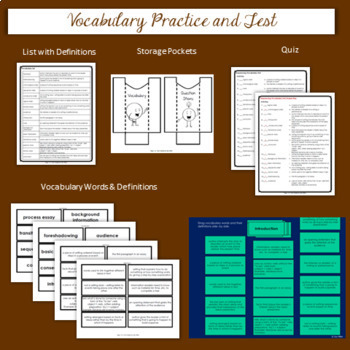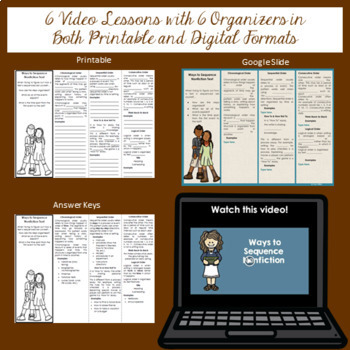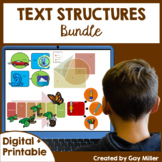Sequencing Text Structure Essay Lessons, Passages, and Activities
- PDF
- Google Apps™

Also included in
- Take care of all your text structure lessons with this one bundle. Students learn how to write cause and effect, problems and solutions, compare and contrast, and sequence essays.Lessons include nonfictional passages for all text structure types and both nonfiction and fiction passages for compare aPrice $9.00Original Price $16.00Save $7.00
- In this reading series, all activities are provided in both digital and printable formats. The digital resources were created using Google Slides. You may convert the Google Slides to PowerPoint lessons for students to complete when they are not online.What's Included:General Teaching· Vocabulary LiPrice $25.00Original Price $48.00Save $23.00
Description
Have you ever read through your students' sequencing essays and realized they don't understand how to write an effective essay? These step-by-step lessons will help your students learn the process.
Students practice this skill with a wide variety of fun and engaging activities using both fictional and nonfiction passages on the high-interest topic of animals.
✅ Formats - All activities are provided in both digital and printable formats. The digital resources were created using Google Slides. You may convert the Google Slides to PowerPoint lessons for students to complete when they are not online.
✅ WHAT YOU CAN EXPECT TO FIND
General Teaching
· Vocabulary Practice – word and definition cards for practice + a test on these words
· Question Stems by Grade Level
Hook Activity
5 Video Lessons with Organizers and Activities
- Ways to Sequence Fiction
- Ways to Sequence Nonfiction Text
- Planning a Process Essay
- Hook and Introductory Paragraph
- The Body of Your Essay
- The Conclusion Paragraph
Extra Practice Activities
- Turning a Process Essay into a Demonstration
- Sequencing Cards ~ Set #1
- Sequencing Cards ~ Set #2
- Animal Life Cycles with Animal Covers + Life Cycles
- Writing Idea, Decorative Paper, and Organizers
✅ WHAT BUYERS ARE SAYING
⭐ My students always struggle with sequence. I love these packets and used it for guidance on what and how to get my students to understand sequencing better. - Susan S.
⭐ Soooo many activities. I used the cards for group work and they loved it :0) - Jackie H.
⭐ Thank you for the clean work that I can go to every year! - Branching Out
⭐ Great for review for students to work on during stations while I'm working with small group!! - Dorothy P.
⭐ Sooo many different resources! Very in depth. - Lindsey Bloom
✅ This unit is part of a series. Check out all 4 parts. Save money by purchasing these parts as a bundle Text Structures Bundled Set.

